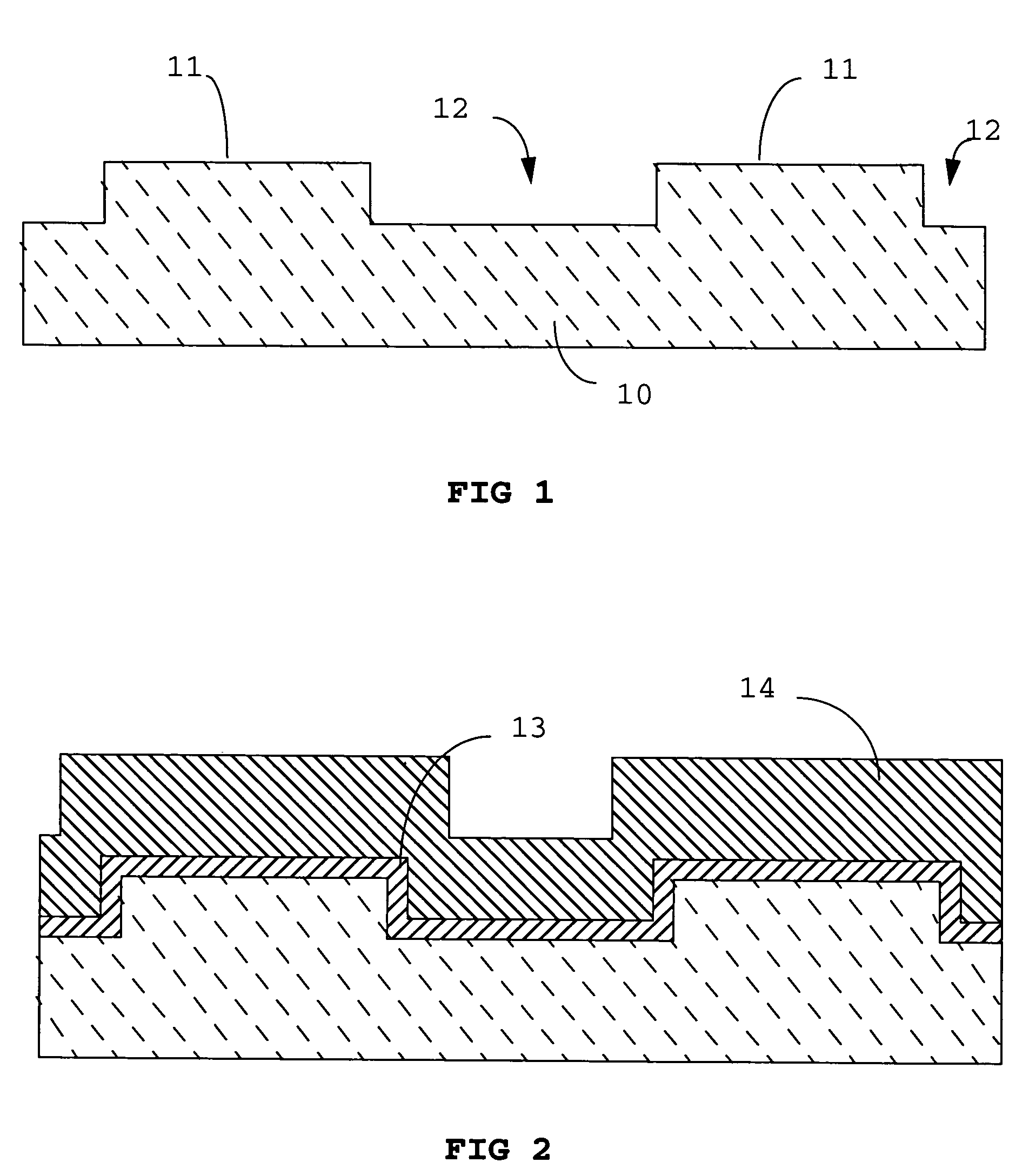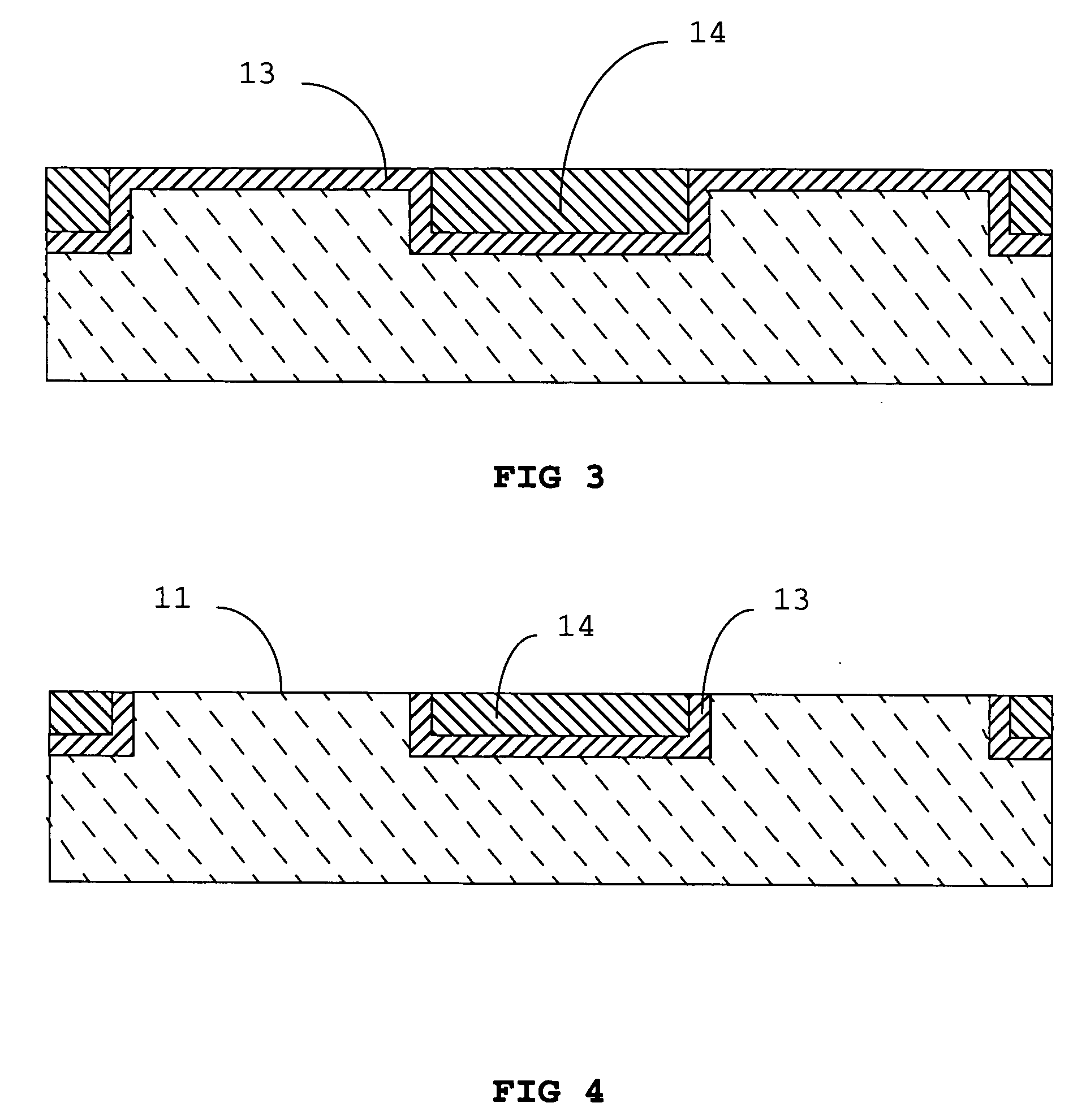Integrated anneal cap/ ion implant mask/ trench isolation structure for III-V devices
a technology of ion implant mask and trench isolation structure, which is applied in the direction of semiconductor devices, basic electric elements, electrical apparatus, etc., can solve the problems of high device integration level, complex interconnection of these devices, and lack of capping layer, etc., to reduce device-level metal capacitance, reduce topography, and reduce the effect of device-level metal capacitan
- Summary
- Abstract
- Description
- Claims
- Application Information
AI Technical Summary
Benefits of technology
Problems solved by technology
Method used
Image
Examples
first embodiment
[0024] The GaAs wafer (10) shown in FIG. 1 is either semi-insulating (near intrinsic), or is doped of the opposite type to be used in the outer portions of the active regions (11).
[0025] The wafer is patterned with conventional photolithographic means, and an etch that leaves 500 A-5000 A deep isolation trenches in the GaAs. The FIG. 1 drawing shows sharp bottom corners, but the GaAs etch used at this step will need to round these corners to a degree dictated by the modulus of the gap fill material, and the temperature of subsequent anneals used.
[0026] An optional background implant may be done at this point.
[0027] Next silicon nitride (13) is deposited on the semiconductor as a combination anneal cap layer, and a CMP stop layer. The thickness of this layer is typically 5-25% of the depth of the trench etched, but specifically depends on the uniformities and selectivities of the subsequent process steps.
[0028] A silicon dioxide gap fill layer (14) is deposited on top of the anne...
second embodiment
[0034] The GaAs wafer shown in FIG. 1 comprising a substrate, and device epitaxial layers grown on top. Device epitaxial layers may be those used for forming HBT devices, HEMT devices, optimized MESFET devices, or other devices.
[0035] To electrically isolate active regions of the wafers, the wafer is patterned with conventional photolithographic means, and an etch that removes the active layers of the wafer in the isolation regions (12). Depending on the epitaxial structure of the starting material, the depth of these trenches may be anywhere from 500 A to several microns.
[0036] Next, silicon nitride (13) is deposited on the semiconductor as a combination anneal cap layer, and a CMP stop layer. The thickness of this layer is typically 5-25% of the depth of the trench etched, but specifically depends on the uniformities and selectivities of the subsequent process steps.
[0037] A silicon dioxide gap fill layer (14) is deposited on top of the anneal cap layer at a thickness larger th...
PUM
 Login to View More
Login to View More Abstract
Description
Claims
Application Information
 Login to View More
Login to View More - R&D
- Intellectual Property
- Life Sciences
- Materials
- Tech Scout
- Unparalleled Data Quality
- Higher Quality Content
- 60% Fewer Hallucinations
Browse by: Latest US Patents, China's latest patents, Technical Efficacy Thesaurus, Application Domain, Technology Topic, Popular Technical Reports.
© 2025 PatSnap. All rights reserved.Legal|Privacy policy|Modern Slavery Act Transparency Statement|Sitemap|About US| Contact US: help@patsnap.com



